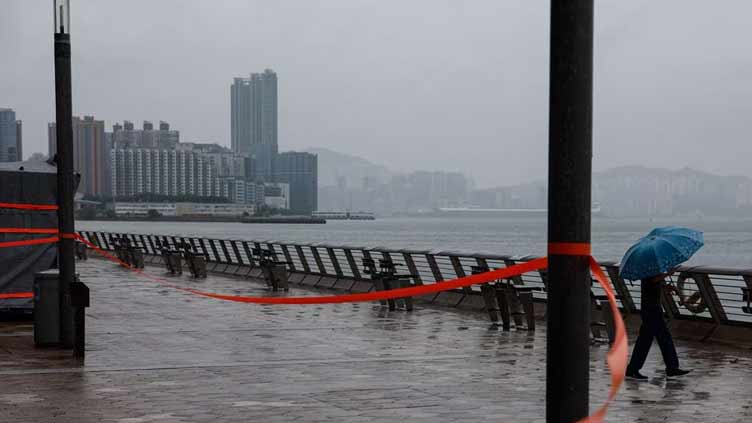Flights scrappedn businesses shut as super typhoon Saola nears Hong Kong, Guangdong

World
The super typhoon could make landfall late on Friday or early on Saturday in Guangdong
HONG KONG (Reuters) - The Asian financial hub of Hong Kong and the Chinese province of Guangdong cancelled hundreds of flights and evacuated nearly 800,000 people Friday as the imminent arrival of Typhoon Saola forced closures of businesses, schools and financial markets.
Packing winds of around 200 kph (125 mph), the super typhoon could make landfall late on Friday or early on Saturday in Guangdong, and rate among the five strongest to hit the populous province since 1949, authorities have warned.
Across Guangdong, 785,155 people had been evacuated from high-risk areas, while 13 cities delayed the start of the school term on Friday following the summer break.
In Hong Kong, more than 300 people were stranded at the airport by the cancellation of about 460 flights as the city of 7.5 million people raised its hurricane warning to the highest level.
"It's very sad for me because I am not able to attend my daughter's oath-taking," said a tearful Ledenila Barizo, 54, who had been due to fly to the Philippines, as she paced in front of the airline desk.
The weather will deteriorate rapidly as the typhoon makes landfall, Hong Kong weather officials said, with storm surges of about 3 metres (10 feet) higher than the normal tide and maximum water levels reaching a record.
Weather authorities in China have said Saola could make landfall along the coast between the cities of Huidong and Taishan. Hong Kong and Macau lie in the centre of that stretch.
Saola is one of three tropical cyclones to have formed in the northwest Pacific Ocean and South China Sea. The second, Haikui, is approaching Taiwan, and is set to hit the island on Sunday before heading towards China's province of Fujian.
The third, Kirogi, the most distant from land, was still classed as a tropical storm.
Authorities suspended trains services in Guangdong up to 6 p.m. (1000 GMT) on Saturday.
Nearly 85,000 fishing boats operating off the coast of Guangdong had returned to port.
Shenzhen, a city of more than 17 million, suspended work, businesses and financial markets from Friday afternoon, warning that destructive winds could lash it through Saturday.
"Of course I'm worried, it's forecast to be a big one and I want to get home," a delivery driver surnamed Lu said on a busy day for the city's supermarkets, many set to close early.
By 11 a.m. (0300 GMT), airports in Shenzhen and the nearby city of Zhuhai had cancelled hundreds of flights.
As a safety precaution, the Hong Kong-Zhuhai-Macau bridge linking the three cities was shut on Friday.
Officials of the Taishan nuclear power plant in Guangdong said it had halted outdoor operations and transferred out vulnerable materials, with emergency staff taking up duty.
North of Guangdong on the coast, the province of Fujian had evacuated 161,600 people as of Friday.
In the gambling hub of Macau, all casinos will temporarily close from 11 p.m. on Friday until further notice, the government said. The casinos had just begun recovering after three years of COVID-induced lockdowns and travel disruptions.
Saolo is small in size but strong in intensity, Chinese meteorologists told Chinese state media.
The havoc caused by typhoons depends on how long they linger over land, one expert told Reuters, citing the example of Tropical Storm Rumbia in 2018.
"Despite its moderate intensity, (Rumbia) had an exceptionally long lifespan, lasting a total of 132 hours, with over three days spent over mainland China," said climatologist Shao Sun of the University of California, Irvine.


